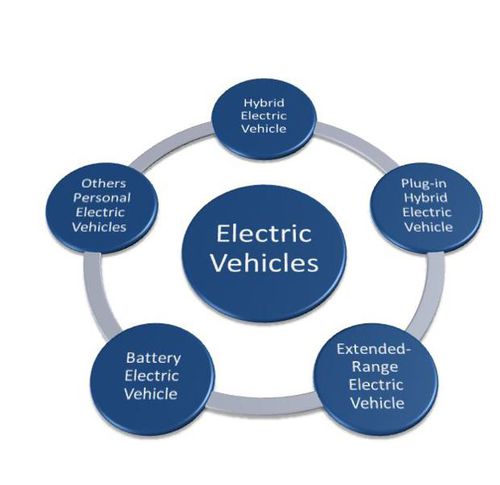Difference between revisions of "Types of Electric Vehicles"
Amika.sethi (Talk | contribs) |
(No difference)
|
Latest revision as of 03:15, 28 July 2011
Back to Homepage
Contents
Hybrid Electric Vehicle
The hybrid electric vehicle uses a small electric battery to supplement the standard internal combustion engine, providing increased fuel efficiency — currently around 25 percent higher than conventional light-duty vehicles. These systems minimize idling and provide an integrated electric start and launch assist, which boosts the car's ability to start and accelerate and is important in stop-and-go city driving. The hybrid electric vehicle uses dual-fuel systems; both the electric motor and internal combustion engine are able to drive the wheels. The electric motor takes the car from idle or stationary up to minimal speeds (generally less than 40 mph, depending on the car) and then the internal combustion engine kicks in at higher speeds.The battery is recharged by both the gasoline engine and regenerative braking. Regenerative braking captures kinetic energy to charge batteries when the driver pushes the brakes. Ford Fusion Hybrid and the Toyota Prius are examples of vehicles in the hybrid category.
Plug-in Hybrid Electric Vehicle
The plug-in hybrid electric vehicle, like the hybrid electric vehicle, is a dual-fuel car. It has a larger battery pack that is plugged into the electric grid for charging, increasing the share of electric power used by the car.
This larger battery usually supplements a smaller internal combustion engine than a hybrid or conventional gas-powered vehicle. Both the hybrid and plug-in hybrid combine the internal combustion engine with a battery and electric motor to increase fuel efficiency. The difference is that plug-ins have the added feature of plugging in to an electric outlet to extend the use of electricity as a fuel.
The plug-in hybrid can run on electric power only up to about 40 mph, at which time the internal combustion engine takes over. It is possible to use only the electric system to commute around a city and not engage the internal combustion engine. However, the majority of commuters in the TVA region that use interstates will need to drive at speeds greater than 40 mph.
Batteries can be charged by the gasoline engine, regenerative braking (capturing the kinetic energy of braking to charge the battery) and by plugging in overnight during off-peak hours at home.
While this limits the immediate need for public charging stations, the ideal situation would be to plan and build an infrastructure of charging stations to provide a full array of options for plug-in hybrid owners.
Extended-Range Electric Vehicle
An extended-range electric vehicle uses an internal combustion engine to power an electric generator that charges the battery system in a linear process — the engine powers a generator, which in turn charges the battery. The internal combustion engine only charges the battery system. The Chevrolet Volt, built by General Motors, is being categorized as an extended-range electric vehicle.
Battery Electric Vehicle (BEV)
Battery electric vehicles are all electric, have no internal combustion engine and are totally dependent on plugging into the electric power grid. To accommodate a range of 80-plus miles per charge, electric-only vehicles require a larger battery — currently ranging from 18 kilowatt-hours to more than 35 kilowatt-hour packs — than the combined electric-petroleum cars. In order to accommodate charging these larger battery packs within the period (usually the night) when power use is low, higher-power charging is required to get the job done faster. Rather than standard 120-volt outlets found in most residences and businesses, it becomes necessary to have access to 240-volt and higher.
Nissan has come up with a 100 percent battery electric car, the LEAF that was introduced in late 2010.
Other Personal Electric Vehicles
Other electric vehicles — smaller vehicles with maximum speeds of 25 mph or less are — classified as neighborhood electric vehicles. Golf carts dominate this vehicle category. Various manufacturers offer three- and four-wheel versions today that can be utilized in private and some commercial applications, such as airport shuttles.
Chrysler, with its subsidiary Global Electric Motorcars, is the U.S. sales leader in this category. Some cities use these small vehicles for parking-meter reading. Utilities can benefit from these vehicles on generation sites such as a nuclear power plant, where transportation of people and other resources are necessary but where efficiencies can be improved.
Back to Homepage
